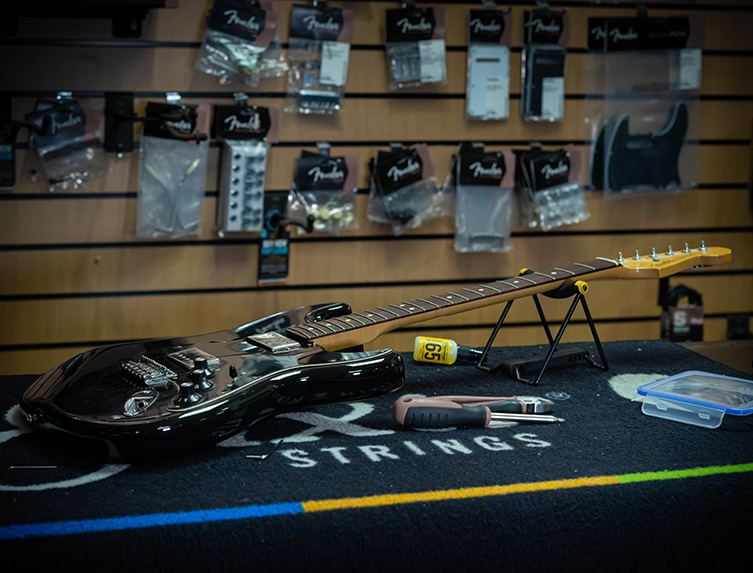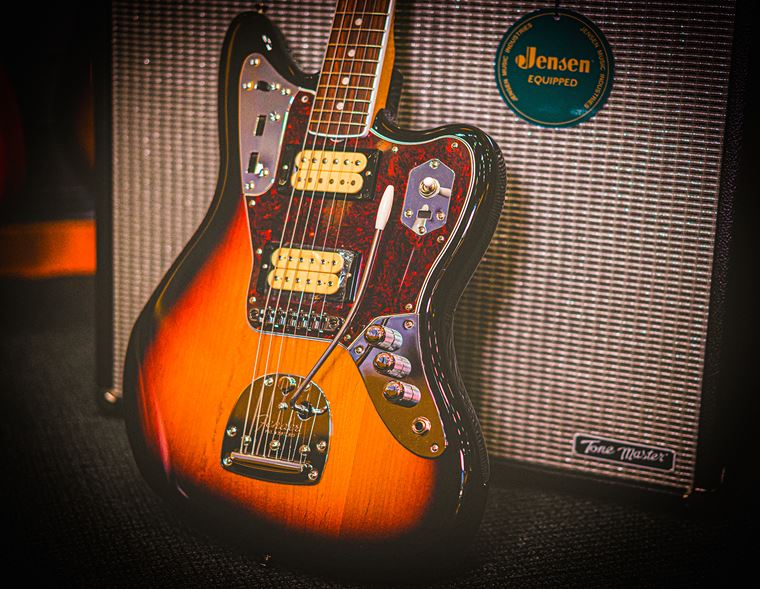Restringing for Beginners
So, you’ve had your guitar for a few months now.
How are you enjoying it? Are you loving it? We hope so!
Now, here’s a thing: those strings you’ve been using? It’s probably time they were changed...
Why, you say? You haven’t broken one! Well, that may be the case, and well done if you haven’t (and don’t worry if you did: it’s quite normal in the beginning), but that doesn’t mean that it isn’t time for a fresh set of strings.

Why Restring?
Why indeed? Well, you may or may not have noticed yet, but your strings are now a couple of months old, and have (hopefully) seen a lot of playing action from yourself! This means that they have been struck, strummed, bent and stretched, all from a pair of human hands that emit corrosive oils.
Yes, strings are consumables: resources that eventually go bad and need replaced. But how do you know when to replace them? Well, there are a number of things to look out for, some more obvious than others:
- Tuning problems: are you finding that you are tuning up more often than before? And is it now harder to get the strings to all tune together? This indicates that the strings are worn and need changing.
- Darker, flatter tone: have your strings long since lost their ‘zing’? Does the sound you’re producing sound flat and lifeless compared to how things sounded a month or two ago? Strings pick up dirt and hand oils over time, and the result is this flat, uninspiring sound. Time to restring!
- The strings look physically dirty: Do your strings have little dark areas on them just where they sit above the frets? Can you see discolouration anywhere on the strings? If this is the case, then you really should have restrung your guitar months ago! Don’t leave it a moment longer!

Fresh Strings Matter
The feel and sound of a fresh set of strings is something you’ll come to really recognise and enjoy. It’ll be something to look forward to, and the good news is, restringing is not as difficult as you might think!
Putting on a fresh set of strings makes your guitar tune up more easily and accurately. It makes the notes themselves intonate better (that means that when you play, say, a ‘D’ note, you’ll actually get a ‘D’ note and not a note that’s close to what you wanted to hear but a bit flat/wonky/off) right up and down the fingerboard. Fresh strings feel great under your fingers, and most importantly, they sound great! You’ll hear a lot more sparkle and twang with new strings. They’ll sustain longer too, and chords will sound richer.
Put simply, restringing your guitar improves and rejuvenates your guitar.
We all want to sound better. Restringing helps!
Restringing an Acoustic Guitar
We’ve produced a special set of videos for you, to take you through the process of restringing in a simple and hopefully effective way. Keiran, from our guitarguitar store in Glasgow, is here to show you how to successfully restring three types of instrument: an acoustic guitar, an electric guitar and an electric bass guitar.
First up is the acoustic guitar. This video will tell you what items you need in order to ace your first restringing session! Don’t be nervous, just heed Keiran’s wise words and everything will be okay! Remember to slacken the old strings before you snip them off, and be careful when disposing of strings, particularly if you have children or pets around: those string ends can be sharp!
Restringing an Electric Guitar
Next up is the electric guitar. Similar advice applies here in terms of loosening old strings and disposing of them. We use a Stratocaster here for the demonstration, but, as Keiran says in the video, almost all electric guitars follow the same principle: it’s just a matter of locating where the strings go in and come out! As always, if you have questions, do get in touch with us. We’d note that guitars with locking ‘Floyd Rose’-style bridges require somewhat more specialised attention, and would recommend you talk to us before diving in to restring such a guitar.
Restringing a Bass Guitar
Finally, we offer a video for all of our bass players out there. Whilst bass strings can often last longer than guitar strings (since the older they get, the ‘bassier’ they sound, which may be what you want), those tuning problems will creep up eventually, so do consider changing bass strings regularly, too. Even low-end bass tones need a little ‘zing’ to sound their best, and fresh strings will give you that.
Good Luck
We hope these videos have armed you with the skills and confidence to charge on and carefully restring your own instrument. Take your time, realise that you’ll get better and better at restringing the more you do it, and understand that the benefits will be more than worthwhile. From all of us at guitarguitar, good luck!












